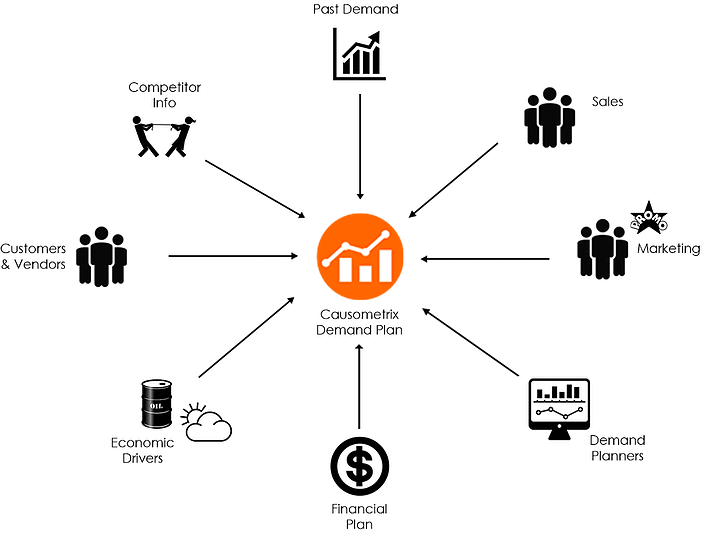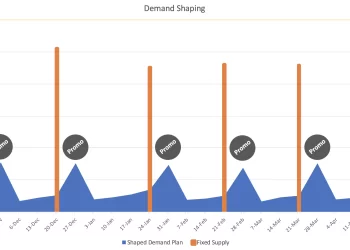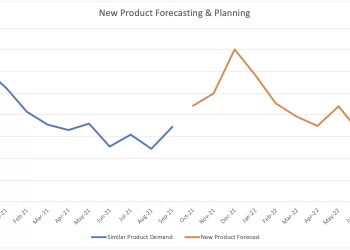Why Collaborative Planning is Key for your Organization

An ancient Greek myth tells of a king named Sisyphus who was punished by Zeus. He was told all he had to do was roll a heavy boulder up a hill. Sisyphus felt this was a difficult task, but possible because of his strength. However, the boulder was enchanted. Every time the boulder was near the top it would roll away from Sisyphus and down the hill, forcing the king to spend eternity in a useless exercise, always almost reaching his goal.
Being involved with demand planning and supply chain management in any organization can feel like the “business” gods are punishing you. Just when you believe you have things figured out, a new wrinkle presents itself. However, there is a better way forward. Through collaborative planning you can achieve a degree of greater predictability in demand and greater stability in the supply chain. Collaborative planning helps your organization in three ways:
- Efficient collection of data
- Proactive crisis management
- Better decision making proces
Efficient Data Collection
Collaborative planning requires both vertical and horizontal cooperation. You must work with the different members of the supply chain as well as the different departments in the organization. Collaborative planning allows you to establish a system for collecting the information you need to make demand forecasts and supply chain management decisions on a regular basis.
When your partners inside and outside the organization understand the need for the data, you can spend less time asking for the information. Instead, you can spend more time organizing and analyzing the data they willingly, and automatically, give you.
Proactive Crisis Management
Your business is dynamic. No two years, quarters, months, or even days are the same. Collaborative planning lets you stay ahead of the changes. Instead of reacting to a crisis and adjusting supply chain management practices on the fly, you have more time to adjust forecasts and proactively make decisions before an issue becomes a full-blown crisis.
The improved communication and data sharing between your organization and your suppliers and partners as well as between the different departments within your organization, means you face fewer surprises and have more help in solving problems.
Better Decision Making Process
Any decision in your organization is only as good as the data at hand. Collaborative planning gives your organization access to more, and better organized, data. The data is also timelier. Once you have mastered collaborative planning, you can know in real time what obstacles your organization is facing and what issues are coming in the future.
This alone improves the decision making process. But, collaborative planning also has another powerful effect on organizations. It creates greater organizational buy-in. Collaborative planning lets other departments better understand the importance of demand planning and supply chain management to the overall financial health of the organization. It produces tangible results instead of just causing people’s eyes to glaze over.
Collaborative planning strengthens your organization’s relationship with its key partners and gives them a greater stake in the success of your business.
If your organization is not using collaborative planning you are destined for a series of unpleasant surprises and mounting feelings of frustration. Your demand planning and supply chain management efforts will feel like rolling an enchanted boulder uphill by yourself. Collaborative planning not only lets you share the burden, but also significantly improves the results.
Written by Jamsheed Iqbal
Topics:
2 Comments
Leave a Reply Cancel reply
Recent Posts
-
Best Practices for Demand Sensing, Demand Shaping, & Influencing Demand
Despite vast improvements in the tools and techniques available today for demand sensing and demand shaping, a lack of forecast accuracy still prevents many businesses from optimally managing production, distribution, inventories, and sales to meet shifts in demand. This is often because:
October 12, 2021 Read more -
How to Effectively (and Accurately) Forecast and Plan for New Product Demand
Many businesses, large and small, have a huge source of great ideas that can help them improve, innovate, and grow, and yet so many of these companies never think of using this amazing corporate asset. What is this highly valuable asset? Its own people.
September 28, 2021 Read more -
How to Measure your Demand Forecasting Accuracy
Many businesses, large and small, have a huge source of great ideas that can help them improve, innovate, and grow, and yet so many of these companies never think of using this amazing corporate asset. What is this highly valuable asset? Its own people.
July 13, 2021 Read more
Subscribe to email updates from Causometrix!
Stay up-to-date with Causometrix



You should take part in a contest for one of the most useful blogs online. Im going to recommend this blog!
I need to to thank you for this good read!! I certainly loved every bit of it. I have you bookmarked to check out new stuff you postÖ